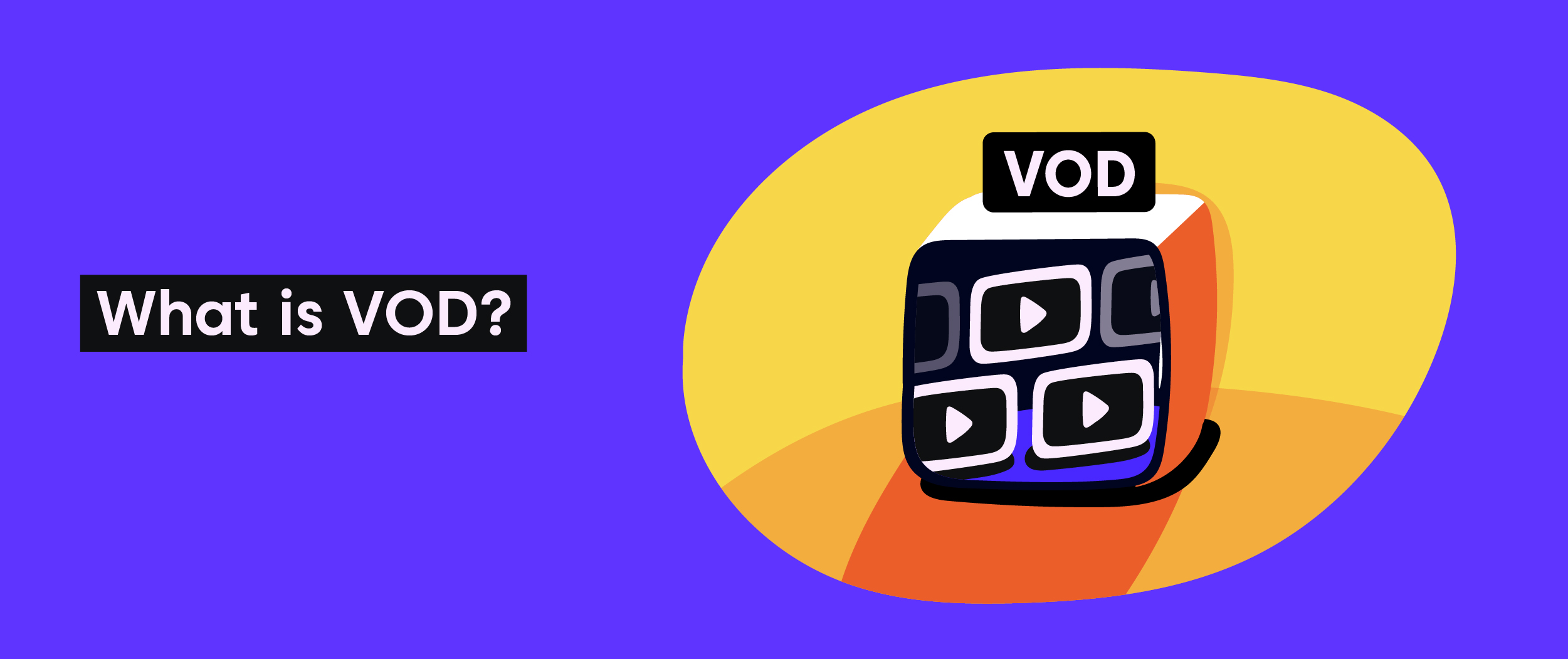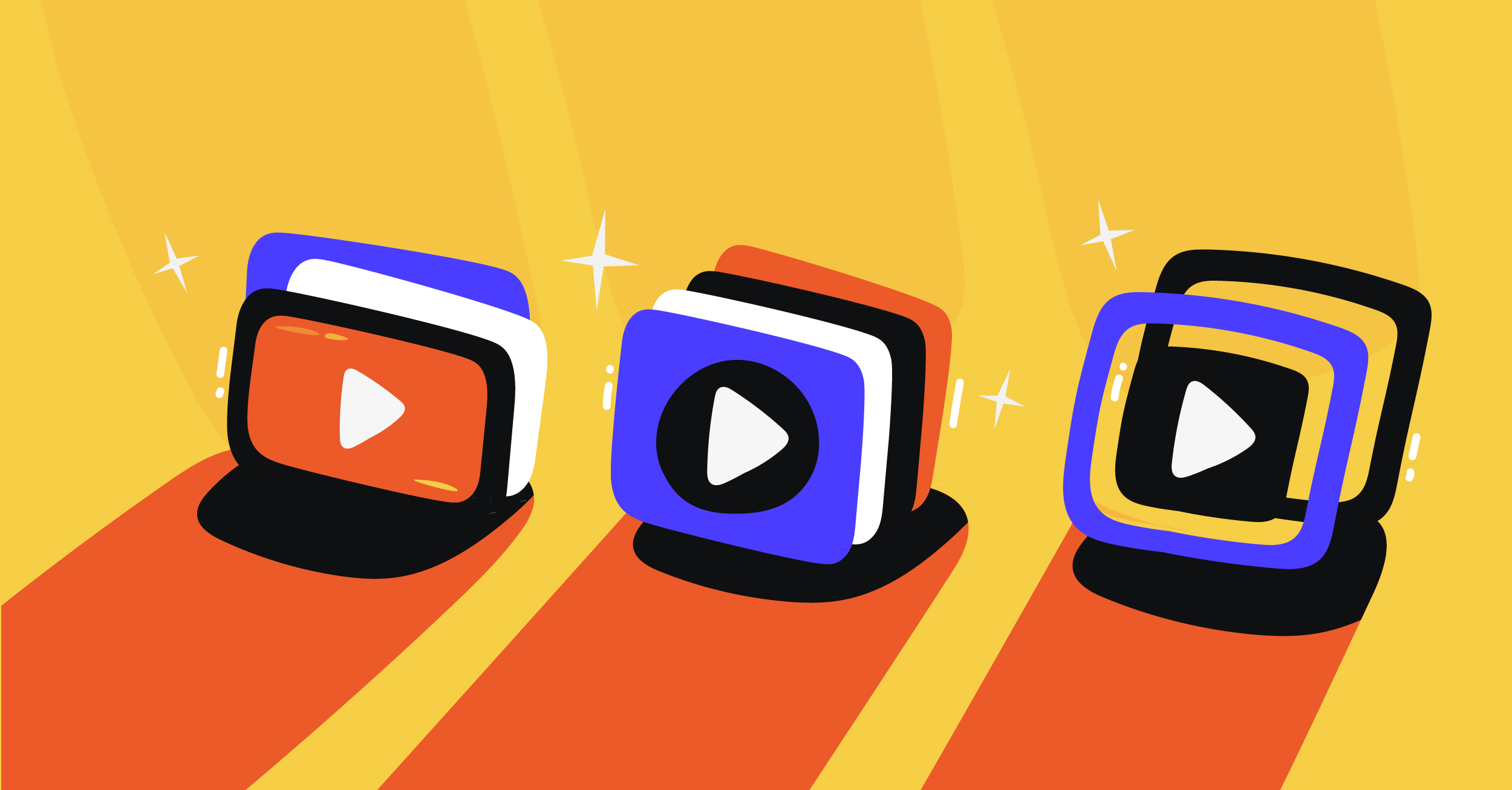Introduction to OTT vs. VOD: What’s the Difference?
Let’s dive into the fascinating world of digital media distribution and unravel the intricacies of VOD and OTT! OTT platforms are like streaming services on the internet that show live videos. They’re different from traditional TV, which uses cables or satellites. VOD is a type of platform that can be used on these streaming services. OTTs can only show videos when they’re being broadcasted live, and you can’t watch them later.
On the other hand, VOD has pre-recorded and downloaded content. You can have your own collection of videos that you bought, rented, or recorded from your VOD service. Additionally, OTT platforms not only stream videos but also have audio broadcasts like podcasts. The biggest difference between OTT and VOD is how they send data. OTT only uses the internet, but VOD can also use cables and satellites.
Distinguishing between the two might seem like a big deal right now. However, as more and more companies offer platforms that combine Video on Demand (VOD) and Over-the-Top (OTT) services, it’s becoming harder to predict where this debate is headed down the road.
OTT vs. VOD: Comparison Table
Here’s a textual comparison table highlighting the differences between OTT (Over-the-Top) and VOD (Video-on-Demand) services:

This table provides a concise overview of the key differences between VOD services and OTT services, including their content variety, access methods, subscription models, pricing, original content production, ad support, and popular examples. Keep in mind that specific features and offerings can vary among different service providers in the VOD and OTT landscape.
What is an OTT streaming service?

OTT stands for TV and film content that you watch through streaming services instead of cable or satellite providers. But it’s not just about services like Netflix and Hulu. Many OTT providers offer live streams with specific content, like cable TV channels. For example, you can watch ESPN through an internet streaming service. Over-the-top (OTT) television attracts viewers due to the fact it features all the advantages of broadcast and cable TV with the flexibility to watch whenever you want.
During the pandemic, OTT live streaming became crucial for maintaining communities and routines. Your favorite yoga class, for instance, can now be accessed through an OTT platform at any time. Your church also uploads faith content and live streams their Sunday service. OTT is growing more prevalent in people’s daily lives as well as in what they watch on television.
In simple terms, OTT refers to any internet video streaming service. Popular examples include HBO Max, Disney+, and others. The first OTT livestream happened in 1995 when ESPN streamed a Major League Baseball game online. But this kind of service only attracted regular users in the late 2000s with the emergence of Amazon Instant Video and Netflix.
Today, many Americans have completely replaced traditional cable TV with OTT. The percentage of people who exclusively watch streaming video increased from 24% in 2015 to 44% in 2021, according to Pew Research statistics.
How Does OTT Work?

OTT operates by pre-recording and storing content in a content delivery network (CDN). The content is then distributed across the internet, and through video delivery technology, the OTT app streams the pre-stored video files from a server. When users utilize the over-the-top app, they request a specific video, which prompts the OTT to send the request to the local CDN. The video is retrieved and delivered to the user in small portions. Additionally, the relevant digital rights management (DRM) server is involved in generating a request.
The server decrypts the requested media and provides it to the user in accordance with their preferences after receiving the request. OTT functions by providing content only when a customer makes a request, using a unicast or one-to-one transmission method. This means that each end-user device establishes a unique connection to the content source. The OTT system allows customers to stream a single video on a single device. Internet service providers (ISPs), through which customers stream content, solely offer the infrastructure and are not responsible for content copyright, video delivery, or content viewing.
Advantages of OTT
OTT platforms have been all the excitement lately, and it’s no wonder why. They bring a bunch of advantages to the table. First off, they save you money because they’re usually cheaper than traditional cable or satellite TV. Plus, their sound and picture quality are top-notch, making your watch time more mind-blowing. No more waiting around, as you can dive straight into your favorite shows or movies with instant playback, and no TV schedules to bother with.
But that’s not all! OTT platforms go the extra mile by serving up content on various devices like smartphones, tablets, and smart TVs. They even whip up their own original content, which is a real magnet for those craving fresh and one-of-a-kind entertainment. All in all, OTT platforms are bursting with advantages that have completely changed the way we consume media content.
Disadvantages of OTT
OTT platforms, like those trendy online streaming services, have gained heaps of popularity lately. However, there are a bunch of downsides you should ponder. One thing to think about is the pesky online restrictions. You need a strong internet connection, or else you might experience annoying buffering and lagging while streaming your favorite shows. And if your network is weak, your viewing pleasure goes down the drain. Plus, there’s the worrisome matter of online safety on these platforms. If they aren’t well protected, your personal info and payment details could be at risk.
Another not-so-great thing about OTT platforms is the absence of censorship, which means you might come across stuff that’s harmful or totally inappropriate. And let’s not forget how these platforms can drain your time and money. You might get hooked and spend way too much, which can seriously mess up your personal and financial well-being. So, before jumping into an OTT subscription, make sure to mull over these factors and use these platforms responsibly.
What is VOD? (Technology for Delivering Video Content)

VOD, an acronym for video on demand, represents a distribution platform that caters to users through subscription plans, pay-per-view options, and rentals. It grants individuals the freedom to enjoy desired content at their preferred time, place, and manner.
VOD serves as a content distribution technology for accessing video content, encompassing television series and movies, at any desired moment. Essentially, it bestows upon users the utmost independence in consuming media in the form of videos on various devices, such as TVs, smartphones, computers, and more.
Diverging from traditional television, Video on Demand eliminates the necessity of satellite or cable connections. By leveraging an adequate internet bandwidth, users can freely indulge in watching videos, granting them the ability to control playback, pause, fast-forward, or rewind according to their convenience.
How VOD Works

Alright, we’ve discussed the meaning of VOD, but are you aware of how video on demand works? To ensure accessibility, the publisher needs to upload and store videos on a server. The publisher should also have a content library available, such as a website or an OTT app, where users can choose and access the desired content.
When a user makes a video selection, the HTML5 player initiates a server request. In response, the server transmits a compressed video file to the player, which then decompresses it. This process takes just a few secs, allowing the user to begin playing the video almost immediately.
Additionally, depending on the specific streaming service, other processes may take place simultaneously. For instance, if advertisements are enabled, the player will send a request to the publisher’s ad server. In cases involving DRM protection, the player will seek a decryption key.
Advantages of VOD

VOD (Video on Demand) is super cool! It has tons of advantages that people love. First off, convenience is off the charts. You can watch your favorite shows or movies whenever you want, no need to stress about schedules or recording stuff (DVRs). It’s perfect for busy folks who want to enjoy their favorite programs on their own terms.
But wait, there’s more! VOD offers a crazy variety of content. From old-school classics to brand-spanking-new releases, there’s something for everyone on these platforms. And get this, some VOD services even have their own exclusive shows and content. Talk about a sweet deal, right?
And guess what? VOD gives you choices! You can pay for each thing you watch or go for a subscription that lets you binge-watch like there’s no tomorrow. It’s all about what suits your wallet and your subscription options.
Overall, VOD rocks the house for both viewers and content creators. It’s all about that convenience, the mind-blowing content options, and the freedom to choose how you pay. Say goodbye to traditional cable or satellite TV setups and say hello to VOD awesomeness!
Disadvantages of VOD
While Video on Demand (VOD) has gained popularity recently, it does have drawbacks. One downside is the need for a reliable and fast internet connection, which might not be accessible everywhere. This can restrict VOD access for people in rural or remote areas.
Moreover, certain VOD services require subscriptions or rental fees, which can accumulate and make them pricier compared to traditional TV options. Another drawback is the limited content available in VOD libraries when compared to traditional TV programming, resulting in less variety.
Finally, some users struggle with navigating the vast content options on VOD platforms, making it challenging to find what they want. Despite these downsides, VOD streaming remains popular due to its convenience and flexibility.
Types of VOD (VOD Monetization Models)
Users can watch videos on demand with the help of the internet-based VOD service, which provides a variety of content. With OTT platforms setting the standard, it offers an alternative to cable and traditional TV services. VOD platforms accommodate a range of preferences by providing subscription-based, transactional, or advertising-based video services, whether it be live streaming or previously recorded and downloaded content.
The emergence of VOD has reshaped the video industry, challenging traditional distribution models and empowering viewers with unlimited access to their preferred content. VOD is becoming the standard for entertainment in the digital age because of its adaptability, convenience, and extensive library.
There are three primary revenue methods for video on demand (VOD): subscription video on demand (SVOD), transactional video on demand (TVOD), and advertising-based video on demand (AVOD).
- SVOD (subscription video on demand)By subscribing for a monthly or yearly price, SVOD subscribers can access the content. A lot of streaming services, like Netflix, Hulu, and Amazon Prime, adopt this model.
- Transactional video on demand (TVOD)The ability to rent or buy certain films for a one-time cost makes TVOD popular among streaming providers for renting movies, such as iTunes or Google Play.
- Advertising-based video on demand (AVOD)YouTube and Crackle are two well-known instances of AVOD, which offer users free videos in return for watching advertising.
Content producers can select the optimal monetization models for their objectives as a business and target audience by being aware of the many types of VOD. VOD has undoubtedly become a popular option for entertainment consumption with the emergence of streaming platforms and OTT (Over-the-Top) services.
Conclusion
OTT (Over-The-Top) and VOD (Video on Demand) are two concepts that are frequently used in the context of video content and streaming services. Even while they could at first look seem similar, they have clear differences.
OTT and VOD both involve streaming videos over the internet, but their main focuses differ. OTT encompasses a wide array of services, including live streaming and various OTT platforms. On the other hand, VOD concentrates specifically on providing on-demand access to recorded content. These terms are not mutually exclusive, as VOD can be incorporated within an OTT streaming service. Understanding the disparities between OTT and VOD is crucial when navigating the ever-evolving video industry and selecting the most suitable content provider service to cater to your preferences.







